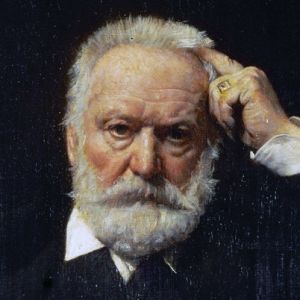
Victor Hugo
Biography
Victor Hugo was born on February 26, 1802, in Besançon, France. After training as a lawyer, Hugo embarked on the literary career. He became one of the most important French Romantic poets, novelists and dramatists of his time, having assembled a massive body of work while living in Paris, Brussels and the Channel Islands. Hugo died on May 22, 1885, in Paris.
Early years
Victor Marie Vicomte Hugo was born in Besançon, France, on February 26, 1802, to Joseph Leopold Sigisbert Hugo and Sophie Trebuchet. He and his two older brothers, Abel and Eugène, lived with their mother in Paris, France, while their father, a general and the governor of the Italian province of Avellino, lived in Italy. Hugo's mother had a special friendship with General Victor Fanneau Lahorie, who became an enemy of the French government. She let him hide in their house, and it was during this time he became a teacher for the Hugo boys. The boys frequently traveled to see their father and these trips caused breaks in their education. As a young boy, Hugo showed an interest in writing poetry. When he was twelve years old, Victor and his brothers were sent to school at the Pension Cordier. There they studied the sciences and spent their leisure time writing poetry and plays. When Victor was fifteen, he won the poetry contest held by the Académie Française and the next year placed first in the Académie des Jeux Floraux's contest. Victor's reputation as a poet developed early in his life, and he received a royal salary in 1822.
Career
Victor Hugo was inspired by François-René de Chateaubriand, the founder of Romanticism in French literature. In 1822 at the age of 20, his first volume of poetry ‘Odes et Poésies Diverses’ was published which established his reputation as a poet and earned him a royal pension from Louis XVIII. Four years later, his second collection of poetry ‘Odes et Ballades’ (1826) strengthened his reputation further.
Meanwhile, his first novel ‘Han d'Islande’ was published in 1823, followed by his second novel ‘Bug-Jargal’, published in 1826. From 1829 – 1840, he published five collections of poetry: ‘Les Orientales’ (1829); ‘Les Feuilles d'automne’ (1831); ‘Les Chants du crépuscule’ (1835); ‘Les Voix intérieures’ (1837); and ‘Les Rayons et les ombres’ (1840).
His first full-length book was ‘Notre- Dame de Paris’ (The Hunchback of Notre Dame), published in 1831. It was immensely successful and was promptly translated to a number of foreign languages. It made the Cathedral of Notre Dame and other Renaissance buildings popular among the people of Europe and encouraged their preservation.
After the Revolution of 1848 and the establishment of the Second Republic, he was elected to the Parliament as a conservative. A few years later, when Napoleon III seized power in 1851 and established an anti-parliamentary constitution, he objected openly calling him a traitor. As a result he was exiled; he settled in Guernsey and lived there until 1870.
Meanwhile on the literary front, he published his next novel ‘Les Travailleurs de la Mer’ (Toilers of the Sea) in 1866. The story portrayed a man's battle with the sea and its deadly creatures, a symbolic theme not far removed from the political turmoil prevailing at the moment. The success of his previous novel, ‘Les Misérables’ ensured that ‘Les Travailleurs de la Mer’ was also a success.
In 1831, Victor Hugo published the Gothic novel, ‘Notre-Dame de Paris’ (The Hunchback of Notre Dame). The story is set in the late medieval period of Paris, France, and presents a grim picture of the society that humiliates and rejects the hunchback Quasimodo. The novel was immensely successful.
Another of his famous novels, ‘Les Misérables’ was published in 1862 after several years of hard work. The story involving several characters primarily unravels the destiny of a convict Jean Valjean, a victim of the society who had been imprisoned for 19 years for stealing a loaf of bread. The novel was an instant success and was quickly translated into several languages.
